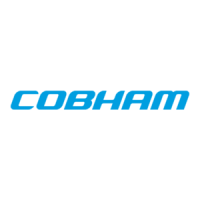GR712RC-UM, Jun 2017, Version 2.9 205 www.cobham.com/gaisler
GR712RC
27.3 Layers
27.3.1 Introduction
The Packet Telemetry (or simply Telemetry or TM) and Advanced Orbiting System (AOS) standards
are similar in their format, with only some minor variations. The AOS part covered here is the down-
link or transmitter, not the uplink or receiver.
The relationship between these standards and the Open Systems Interconnection (OSI) reference
model is such that the OSI Data Link Layer corresponds to two separate layer, namely the Data Link
Protocol Sub-layer and Synchronization and Channel Coding Sub-Layer. The OSI Data Link Layer is
covered here.
The OSI Physical Layer is also covered here to some extended, as specified in [ECSS-E-ST-50-05C]
and [PSS-04-105].
The OSI Network Layer or higher layers are not covered here.
27.3.2 Data Link Protocol Sub-layer
The Data Link Protocol Sub-layer differs somewhat between TM and AOS. Differences are pointed
out where needed in the subsequent descriptions.
The following functionality is not implemented in the core:
• Packet Processing
• Bitstream Processing (applies to AOS only)
The following functionality is implemented in the core:
• Virtual Channel Generation (for Idle Frame generation only)
• Virtual Channel Multiplexing (for Idle Frame generation only)
• Master Channel Generation (applies to Packet Telemetry only)
• Master Channel Multiplexing (including Idle Frame generation)
• All Frame Generation
27.3.3 Synchronization and Channel Coding Sub-Layer
The Synchronization and Channel Coding Sub-Layer does not differ between TM and AOS.
The following functionality is implemented in the core:
• Attached Synchronization Marker
• Reed-Solomon coding
• Turbo coding (future option)
• Pseudo-Randomiser
• Convolutional coding
27.3.4 Physical Layer
The Physical Layer does not differ between TM and AOS.
The following functionality is implemented in the core:
• Non-Return-to-Zero modulation
• Split-Phase modulation
• Sub-Carrier modulation

